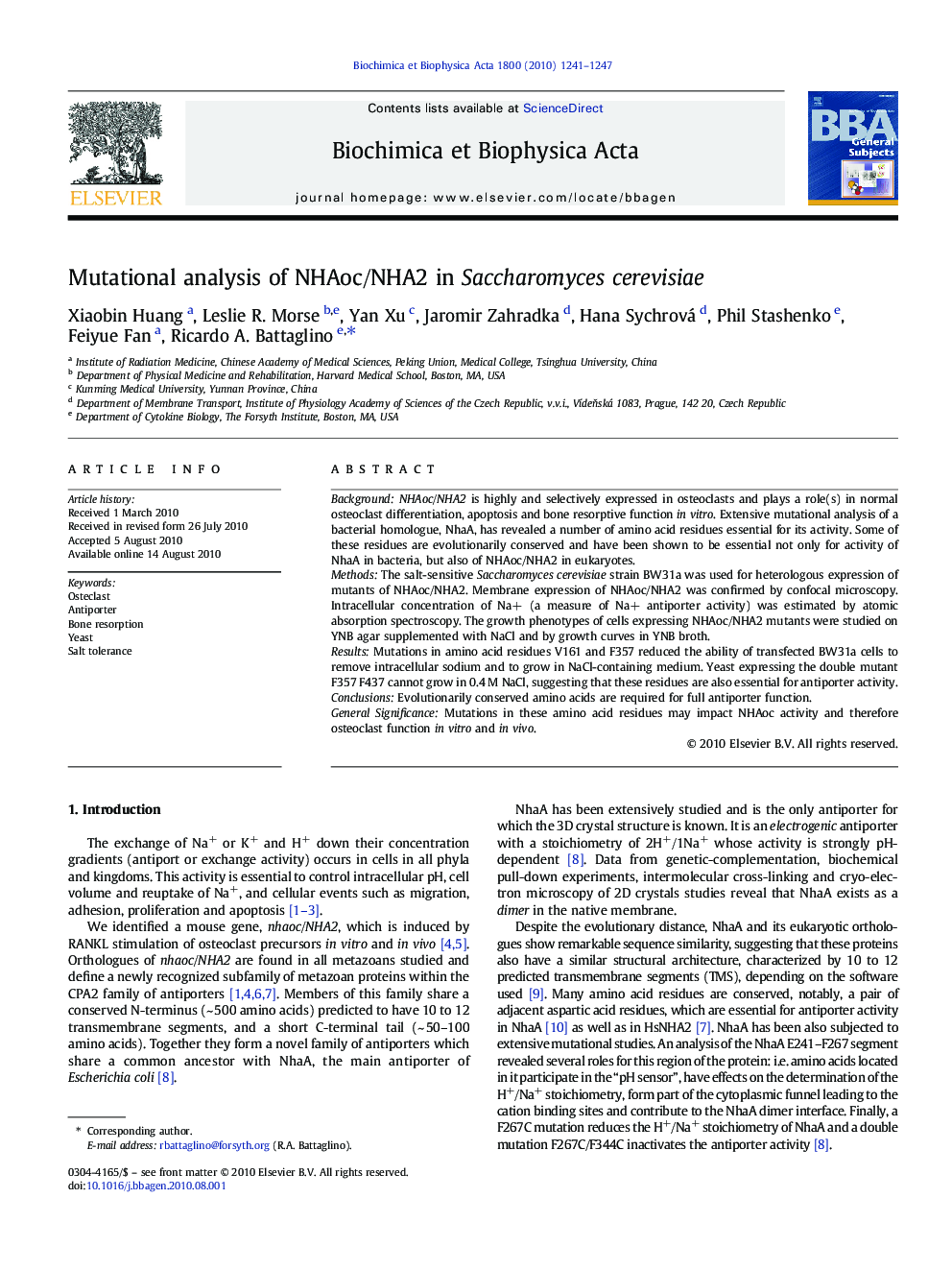| Article ID | Journal | Published Year | Pages | File Type |
|---|---|---|---|---|
| 1947983 | Biochimica et Biophysica Acta (BBA) - General Subjects | 2010 | 7 Pages |
BackgroundNHAoc/NHA2 is highly and selectively expressed in osteoclasts and plays a role(s) in normal osteoclast differentiation, apoptosis and bone resorptive function in vitro. Extensive mutational analysis of a bacterial homologue, NhaA, has revealed a number of amino acid residues essential for its activity. Some of these residues are evolutionarily conserved and have been shown to be essential not only for activity of NhaA in bacteria, but also of NHAoc/NHA2 in eukaryotes.MethodsThe salt-sensitive Saccharomyces cerevisiae strain BW31a was used for heterologous expression of mutants of NHAoc/NHA2. Membrane expression of NHAoc/NHA2 was confirmed by confocal microscopy. Intracellular concentration of Na+ (a measure of Na+ antiporter activity) was estimated by atomic absorption spectroscopy. The growth phenotypes of cells expressing NHAoc/NHA2 mutants were studied on YNB agar supplemented with NaCl and by growth curves in YNB broth.ResultsMutations in amino acid residues V161 and F357 reduced the ability of transfected BW31a cells to remove intracellular sodium and to grow in NaCl-containing medium. Yeast expressing the double mutant F357 F437 cannot grow in 0.4 M NaCl, suggesting that these residues are also essential for antiporter activity.ConclusionsEvolutionarily conserved amino acids are required for full antiporter function.General SignificanceMutations in these amino acid residues may impact NHAoc activity and therefore osteoclast function in vitro and in vivo.
